By Jim Holbrook, director of customer engineering and Jeff Gao, director of product marketing, SiTime
Oven-controlled oscillators (OCXOs) offer the very high performance in timing with stability around ±50 parts per billion (ppb) or better. Because some OCXOs provide Stratum 3E-level timing stability, they’re used in high-throughput communications networks that demand more stringent timing performance, which increases with each new generation. Moving forward, OCXOs will be essential for emerging 5G and IEEE 1588 synchronization applications that require higher performance and will support mission-critical services like self-driving vehicles.
How do OCXOs achieve this stability?
Ambient temperature variation is one of the main factors that adversely affects oscillator frequency stability. OCXOs are designed to maintain tight frequency stability under ambient temperature variation by encasing the resonator and oscillator IC in an enclosure that contains a heating element to maintain the temperature as constant as possible. But even though these “ovenized” devices are engineered to keep the internal temperature constant, the stability of traditional OCXOs can be impacted by variations in the ambient temperature, especially when the temperature changes quickly. This can happen because of imperfections in the enclosure insulation or because of heater control lag.
That’s why designers make painstaking decisions on where to place the oscillator on the board. OCXOs are often placed in a corner, away from fans that cause airflow-induced thermal shock and away from the main processing unit that can generate significant heat. But there are tradeoffs to moving the oscillator into the corner and away from the chip that it’s clocking, such as increased routing complexity and potential signal integrity issues. Some designers must go through a couple of board layout iterations just to figure out where to place the OCXO.
In many cases, the OCXO is covered with a special mechanical shield for thermal and airflow isolation. But these covers are typically not off-the-shelf items. They require a specialized vendor to design and make the cover, additional board space, and extra manufacturing steps to adhere the cover — all of which take time and money — and they’re still not foolproof.
Even with all of these protective measures, the OCXO is still not safeguarded against other factors that affect stability and performance like vibration, time (aging), and electrical noise such as supply voltage or load impedance. This makes timing potentially the biggest source of failure in communications systems.
To alleviate the headaches and risks of using quartz OCXOs, MEMS-based OCXOs have been introduced. These precision MEMS timing devices, with ±5-ppb frequency stability over temperature, are designed to provide better reliability and performance in dynamic conditions compared to traditional OCXOs.
With fewer design considerations, equipment makers can reduce design complexity, speed development time, and accelerate revenue.
Table 1: How MEMS OCXOs solve board-level design issues.
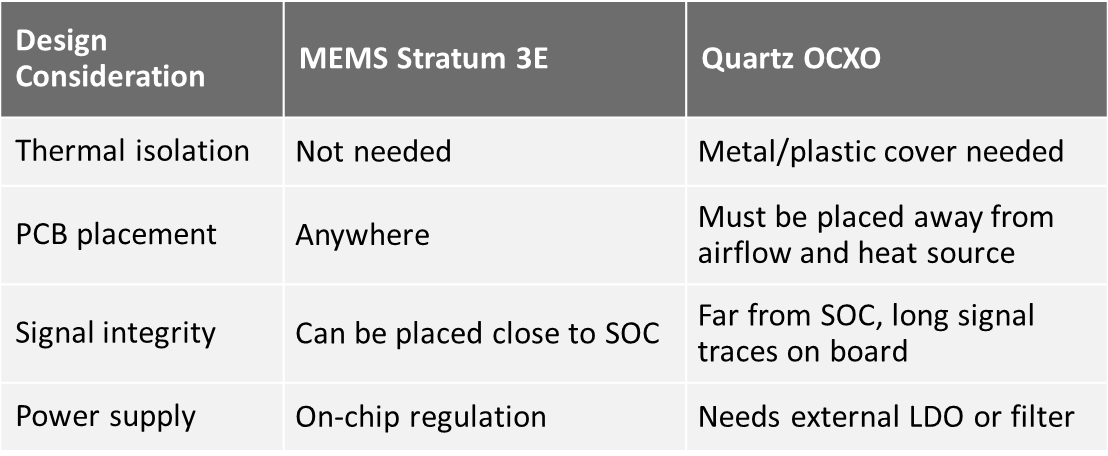
Advantages beyond board placement
Traditional OCXOs are limited in features. In contrast, MEMS OCXOs such as SiTime’s MEMS-based Emerald Platform products are built on a programmable architecture that enables flexibility, unique features, and short lead times. In addition, MEMS OCXOs are superior in size, weight, and power. This is important as electronic equipment becomes denser, packing more into less space while aiming to consume less power and require less cooling.
Unique features available with MEMS OCXOs include the following:
1. Any frequency from 1 MHz and 220 MHz with up to six decimals of accuracy. This allows designers to select the optimal frequency for their clock tree without any penalty in performance and lead time.
2. I2 C serial interface for in-system programmability. This digital control feature eliminates the susceptibility to board-level noise that’s associated with traditional VCOCXOs (Fig. 1 ), which use analog voltage control. This can also eliminate the low-pass filter required to interface the VCOCXO to the SOC (Fig. 2 ).
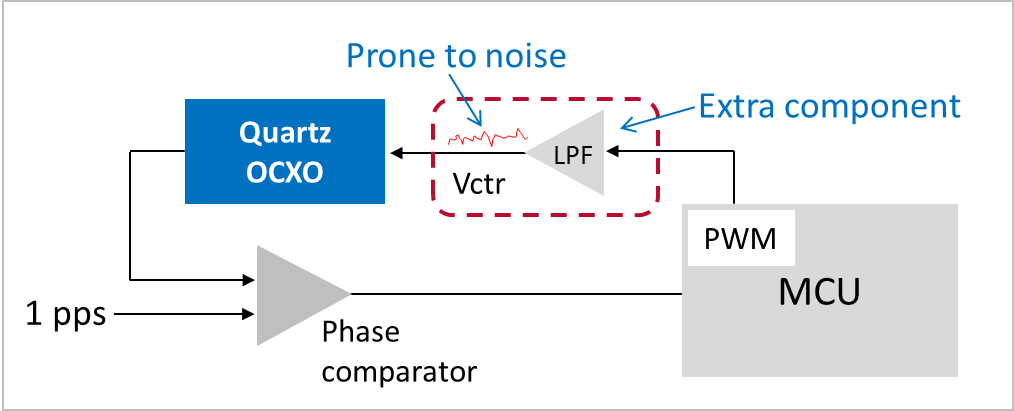
Fig. 1: Quartz VCOCXO susceptible to board-level noise.
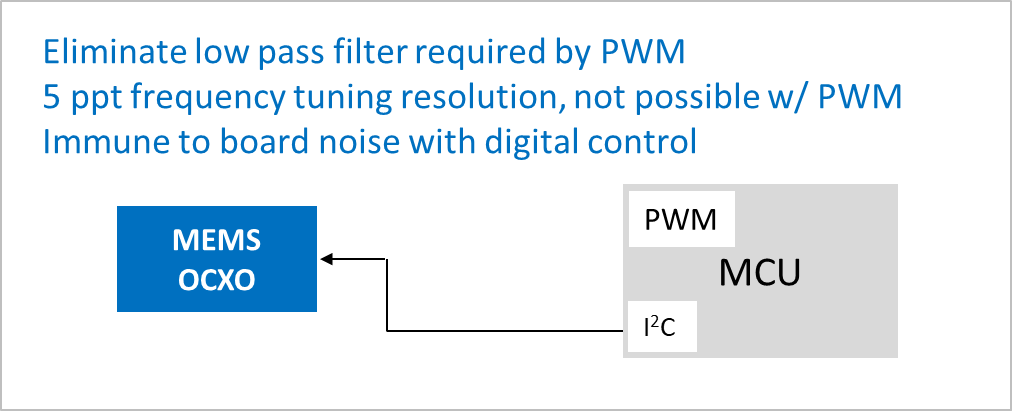
Fig. 2: Emerald OCXO eliminates low-pass filter for PWM and sensitivity to board-level noise.
3. Smallest size with a 9 × 7-mm footprint (75% smaller than quartz) and 5.7-mm height (33% shorter). This eliminates a major obstruction in chassis-based systems and is ideal for high-density small-form-factor systems. MEMS OCXOs are also available in three standard OCXO footprints that can be used as drop-in replacements for quartz.
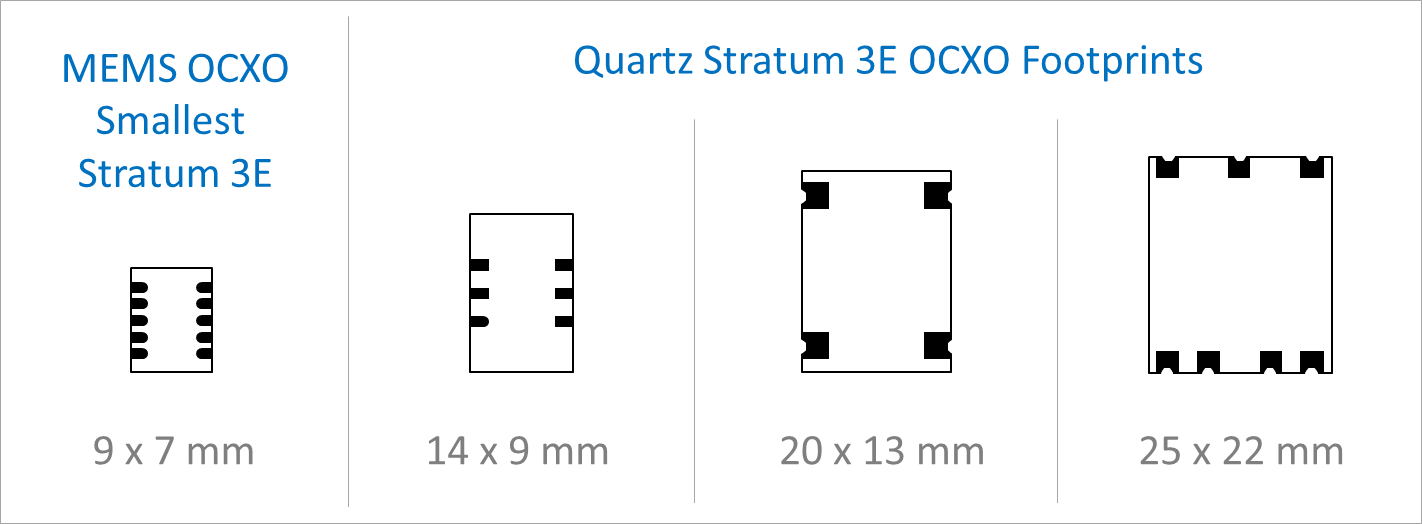
Fig. 3: MEMS OCXOs offer a footprint that is 75% smaller than quartz oscillators.
4. Low power consumption at just 0.6 W, which is quite impressive considering that these devices operate like small ovens. This is about half of what traditional power-hungry Stratum-3E devices consume, which is well over 1 W.
5. Extended operating temperatures from –40°C to 95°C. This is the widest range for any OCXO, planned to be available in 2H 2019, which is particularly suited for outdoor 5G applications in which thermal issues can cause system operation problems.
A more robust and stable Stratum 3E OCXO
Frequency stability is the most fundamental specification for an oscillator. This specification represents the deviation of output frequency due to external conditions. A smaller stability number means better performance. For OCXOs, frequency stability is typically expressed in parts per billion.
Temperature change is one of the main contributors to frequency deviation. The following plot (Fig. 4 ) shows frequency stability over temperature from –40°C to 85°C, as temperature rises and as temperature drops (hysteresis), for four similarly rated devices. The performance of the MEMS OCXO device (shown in the green line) has a delta of just 1.5 ppb, which is four times better than the next-closest OCXO.
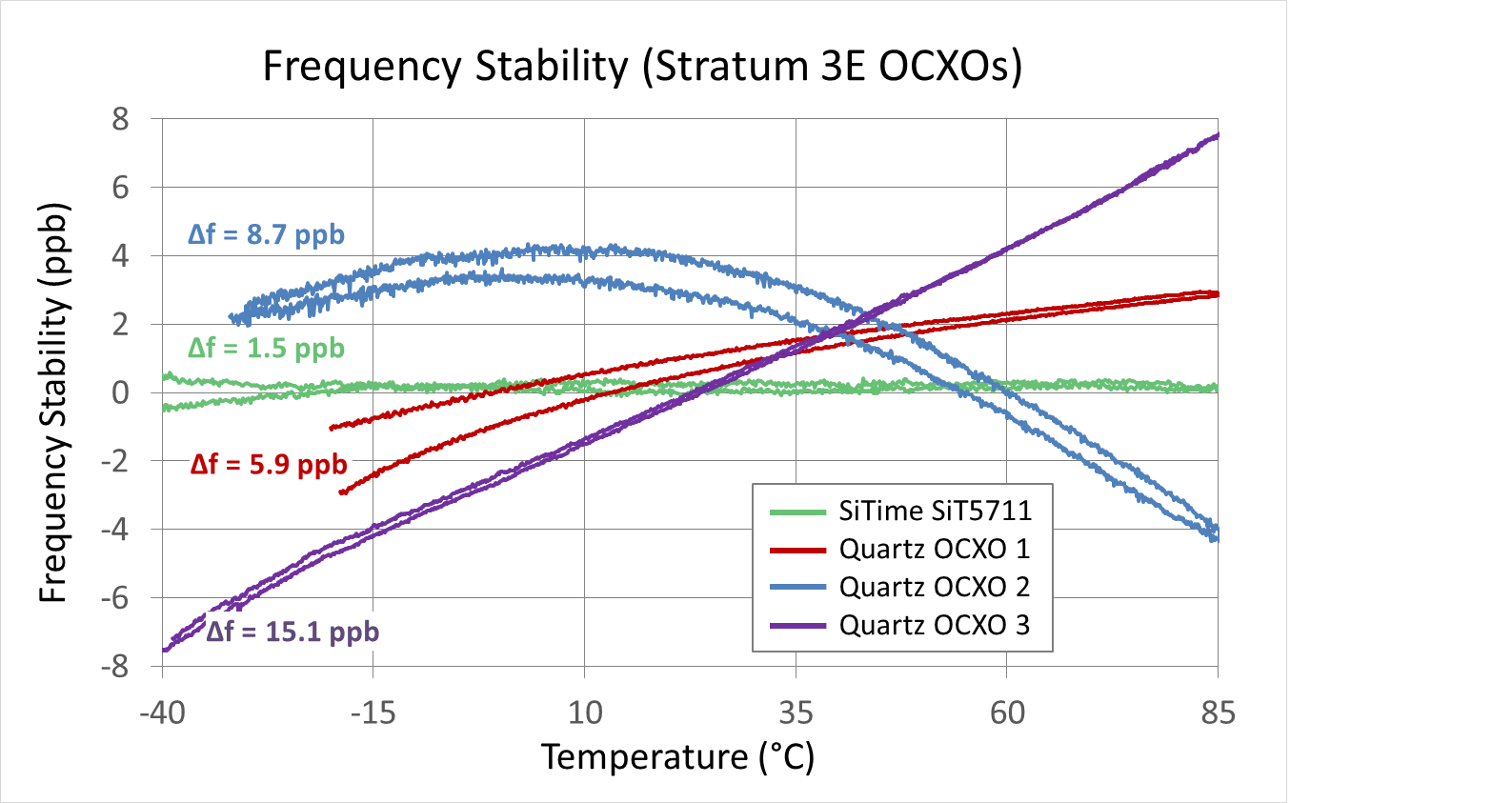
Fig. 4: Frequency stability over temperature from –40°C to 85°C for four similarly-rated devices.
Frequency stability is key for synchronization applications such as Synchronous Ethernet (ITU-T G.8262) and IEEE 1588. This stability enables the oscillator to hold a stable clock when the system is in a holdover state during network fault conditions. But what is more important is the ability to maintain stability under real-world operating conditions such as rapid temperature changes or other dynamic conditions that can affect the clock performance.
Another key metric for precision oscillators is frequency versus temperature slope. Also known as ΔF/ΔT, this measurement quantifies the oscillator’s sensitivity to temperature change at 1°C increments. Here again, a lower number is better because it represents a deviation in frequency for a 1°C temperature change. The MEMS OCXO is rated at just 50 ppt/°C (ppt = parts per trillion). The plot below (Fig. 5 ) shows the ΔF/ΔT performance of a MEMS OCXO compared to the three quartz OCXOs.
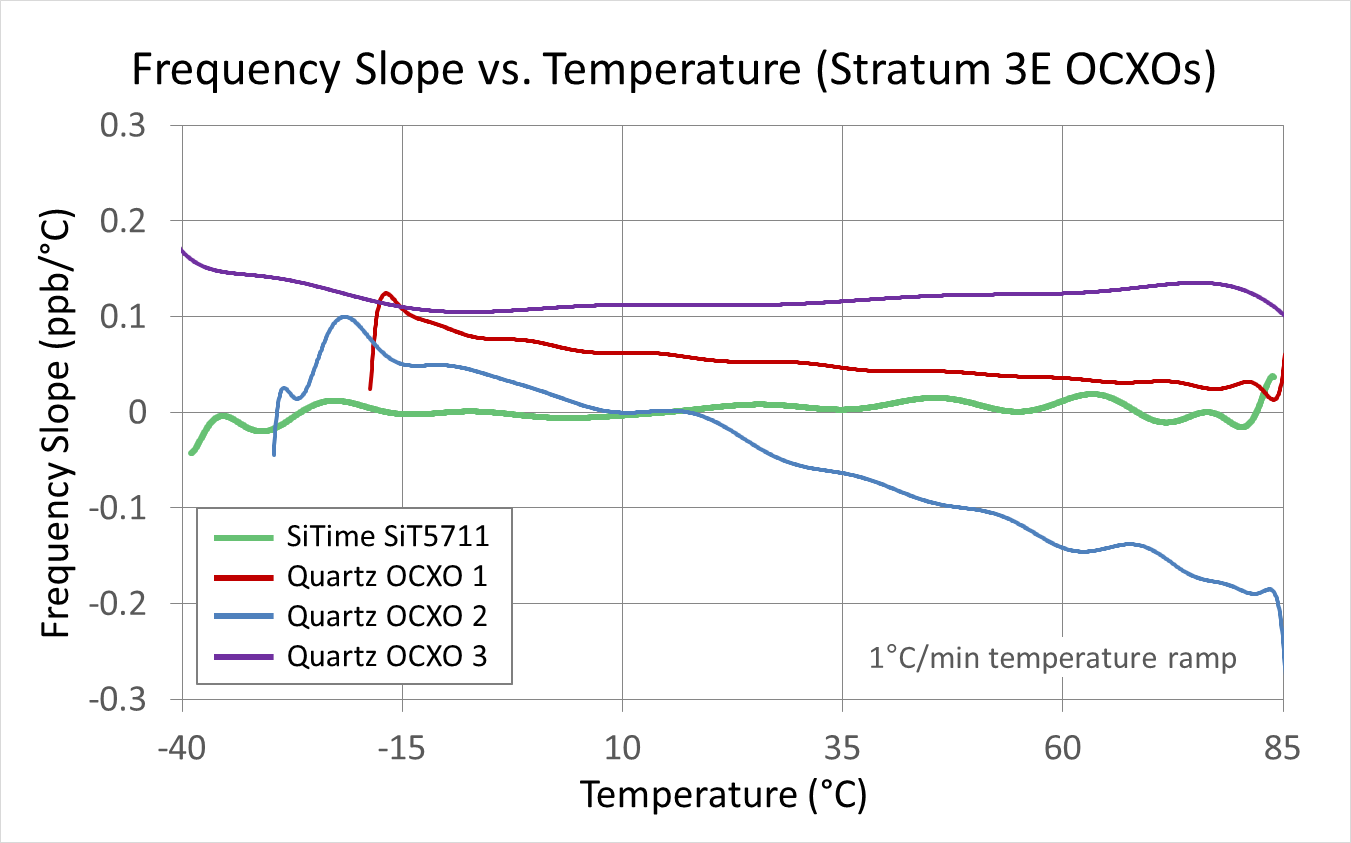
Fig. 5: The ΔF/ΔT performance of a MEMS OCXO compared to the three quartz OCXOs.
Many systems use high-performance components that generate substantial heat and require cooling fans. As processors cycle and fans turn on and off, there can be significant temperature transients in the system. Extreme external temperatures can compound internal ambient temperature and sometimes fans malfunction, causing temperature transients to become even more severe. The following plot (Fig. 6 ) shows how the MEMS OCXO and quartz OCXOs behave above the standard industrial operating temperature range.
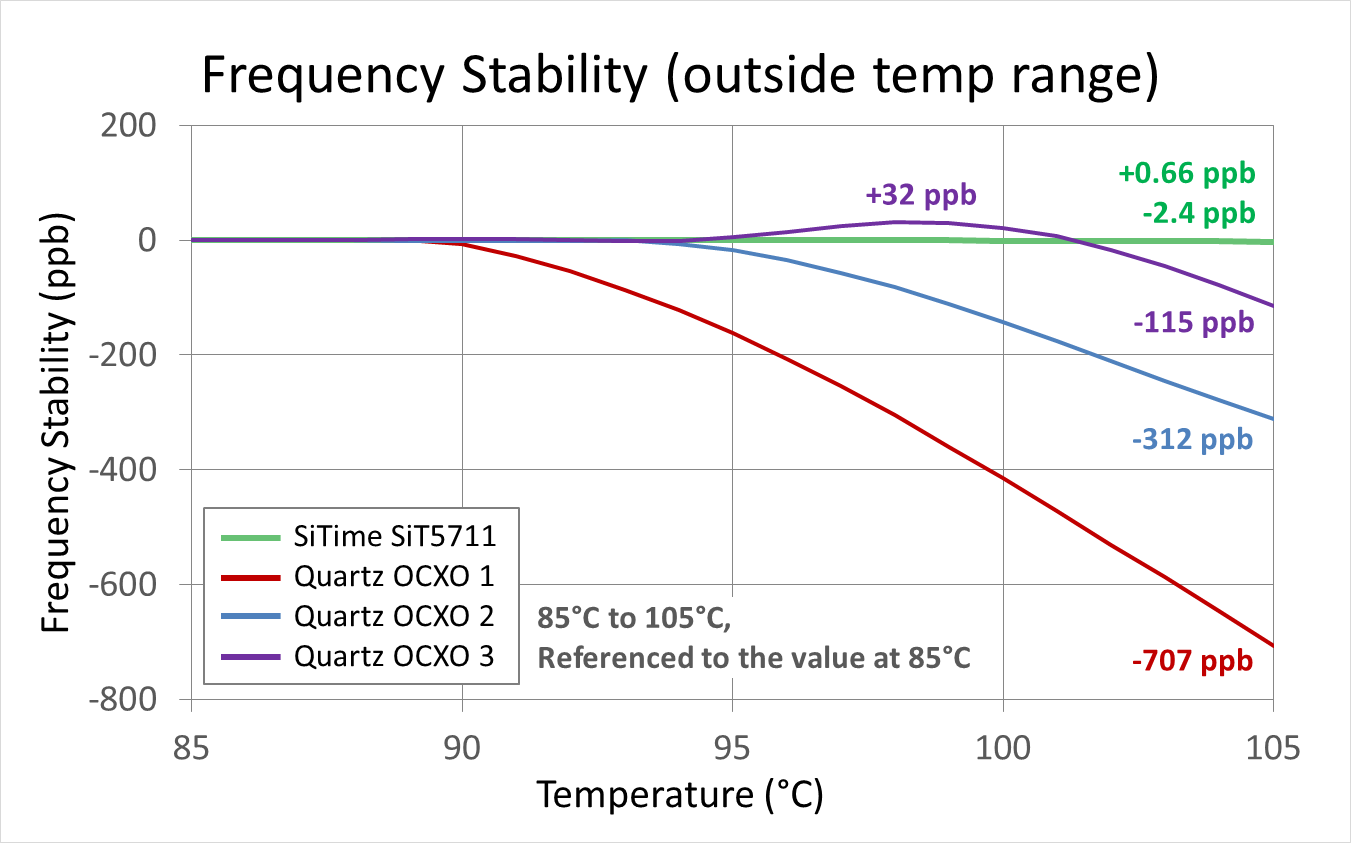
Fig. 6: Frequency stability over extended temperature of a MEMS OCXO compared with quartz OCXOs.
Another measure of frequency stability is Allan deviation (ADEV), which is a measure of oscillator short-term frequency stability. Compared to standard deviation, ADEV is used because it converges for more types of oscillator noise such as flicker frequency modulation and random walk frequency. The plot below (Fig. 7 ) shows how a MEMS OCXO device, with 2e-11 ADEV at a 10-second averaging time, performs with airflow

Fig. 7: Allan deviation of a MEMS OCXO.
Other common timing stability indicators include time deviation (TDEV) and maximum time interval error (MTIE). Both without and with airflow, MEMS OCXOs perform well within the specified ITU-T G.8262 EEC2 mask set as a standard for these measurements.
In addition to being resistant to airflow and rapid temperature change, MEMS OCXOs are virtually immune to vibration, which can also cause the frequency to shift. This resilience is critical because communications equipment is often exposed to vibration, especially when deployed outdoors. Wind, heavy vehicles, and trains are just a few examples of the many sources of vibration. MEMS OCXO products deviate by only 0.1 ppb/g, making them suitable for outdoor pole-mounted equipment.
Beyond all of the external factors that can wreak havoc on oscillator stability, there can be internal changes within the oscillator that change the oscillator frequency over time, even while external environmental conditions are kept constant. This is called aging. MEMS OCXOs have excellent aging specs, at ±0.8 ppb typical daily aging and ±500 ppb typical 20-year aging.
Solving long-standing timing problems
MEMS OCXOs are engineered to solve the long-standing problems of quartz OCXOs. MEMS OCXOs are resistant to a wide range of dynamic conditions and are built to maintain stability in harsh environments in which traditional OCXOs don’t hold up. Equipment manufacturers no longer need to worry about the timing component being the weak link in the system. And service providers can be less concerned about system failures and service interruptions due to timing.
MEMS OCXOs provide consistently stable performance from batch to batch and from one environment to the next. In addition to solving stability and other performance issues, MEMS OCXO solutions are easy to use and offer new features. These solutions increase reliability and performance, reduce design complexity, and eliminate the headaches associated with traditional OCXOs.
Advertisement
Learn more about SiTime








